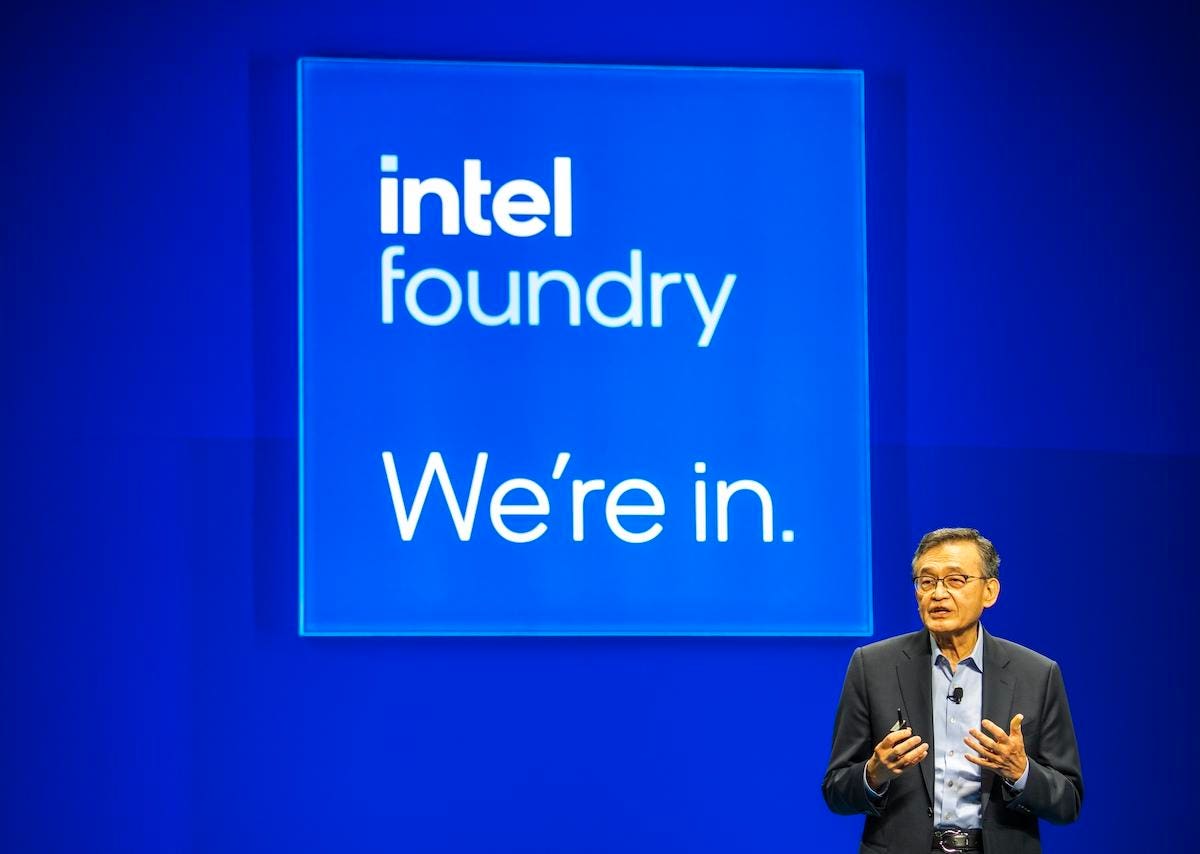OpenAI releases GPT-5, which has handy improvements, but a close look reveals it isn’t AGI and not even close to artificial superintelligence (ASI).
getty
In today’s column, I examine the newly launched GPT-5 from OpenAI, considered the successor to their prior generative AI and large language models (LLMs), which has been a long-awaited release that spurred tremendous speculation and breathless anticipation.
The bottom line is that though this is an impressive version and provides notable improvements, it isn’t artificial general intelligence (AGI). You might have had valid reasons to assume that GPT-5 was going to be AGI since we have been teased over several years that GPT-5 was going to move mountains and finally attain true, across-the-board human-level intelligence, see my coverage and analyses at the link here and the link here on such allusions.
Well, it turns out that’s not happening today.
We mainly have a somewhat better generative AI that gets accolades for various notable advances and enhancements. That’s worth a hearty cheer. By and large, you will find it a useful and handy tool. Again, it isn’t pinnacle AI by any stretch of imagination.
Also, if you were eagerly expecting that this might be a harbinger of the next step, artificial superintelligence (ASI), sorry, but that’s a no-go. There isn’t anything of an evidentiary nature that proves this to be the case. ASI remains elusive, beyond our reach, and maybe, someday, we will consider GPT-5 to be a part of the historical path there. Or we will realize that GPT-5 was merely one of many AIs that happened to be devised and released from time and time but had little to do with attaining actual ASI.
Let’s talk further about GPT-5, including what it is and what it is not.
This analysis of AI breakthroughs is part of my ongoing Forbes column coverage on the latest in AI, including identifying and explaining various impactful AI complexities (see the link here).
Official Launch Of GPT-5
In addition to a live video-streamed presentation with Sam Altman and his team touting GPT-5’s release, there are various technical docs posted at the OpenAI website describing GPT-5. I’d suggest that any AI developer or similar technical specialist would benefit from exploring the GPT-5 System Card, a semi-technical depiction of the overall nuts-and-bolts of GPT-5.
One key aspect is that GPT-5 is essentially a wraparound of several new GPT-5 submodels that are reflective of prior versions of OpenAI’s line of products. Allow me to explain this since it is a crucial point.
You might know that there has been an organic expansion of OpenAI’s prior models in the sense that there have been GPT-4o, GPT-4o-mini, OpenAI o3, OpenAI o4-mini, GPT-4.1.-nano, and so on. When you wanted to use OpenAI’s AI capabilities, especially from an AI developer’s or AI devotee’s perspective, you had to select which of those available models you wanted to utilize. It all depended on what you were looking to do. Some were faster, some were slower. Some were deeper at certain classes of problems, others were shallower.
It was a smorgasbord that required you to pick the right one as suitable for your task at hand. The onus was on you to know which of the models were particularly applicable to whatever you were trying to do. It could be a veritable hit-and-miss process of selection and tryouts.
GPT-5 now has uplifted those prior versions into new GPT-5 submodels, and the overarching GPT-5 model makes the choice of which GPT-5 submodel might be best for whatever problem or question you happen to ask. I’ll comment on this umbrella or wraparound approach in a moment, so hang in there.
According to the official OpenAI blog posting of August 7, 2025, entitled “Introducing GPT-5,” here is what GPT-5 is principally about (excerpts):
- “We are introducing GPT‑5, our best AI system yet.”
- “It is a unified system that knows when to respond quickly and when to think longer to provide expert-level responses.”
- “GPT‑5 is a unified system with a smart, efficient model that answers most questions, a deeper reasoning model (GPT‑5 thinking) for harder problems, and a real‑time router that quickly decides which to use based on conversation type, complexity, tool needs, and your explicit intent (for example, if you say ‘think hard about this’ in the prompt).”
- “GPT‑5 not only outperforms previous models on benchmarks and answers questions more quickly, but—most importantly—is more useful for real-world queries.”
- “GPT‑5 is available to all users, with Plus subscribers getting more usage, and Pro subscribers getting access to GPT‑5 pro, a version with extended reasoning for even more comprehensive and accurate answers.”
Upside And Downside Of Wraparound
Consider the heralded wraparound aspect and what it foretells.
Let’s use an analogy to provide insight. When you drive a car, most people prefer to have an automatic transmission that selects which gear the car should be in. It used to be that having a manual transmission was the norm. Gradually, automatic transmissions became the new norm.
You could liken the GPT-5 model to an automatic transmission that determines which GPT-5 submodel (a gear, per my analogy) is the right one to use. I would wager that everyday users of GPT-5 will be generally satisfied with that approach. The thing is, just as an automatic transmission might sometimes make a choice that isn’t the best selection, the same can happen with the GPT-5 model choosing a GPT-5 submodel.
The issue at hand is that if a GPT-5 submodel is selected and run in this automatic transmission mode, but it turns out not to be the best choice, it is going to run anyway. If you are paying for your AI usage, you’ll have to pay for the run-time that might not produce as solid an answer as you hoped for.
Furthermore, you might not even realize that you were inadvertently shortchanged by the fact that a less-than-best choice was made of which submodel to run. The odds are that you’ll just assume that the answer produced was the best possible achievement. Meanwhile, if you perchance tried one of the GPT-5 submodels directly that you thought might do a better job, similar to selecting a specific gear when your car is going up a hill or on a straightaway, a better result might have arisen.
It will be interesting to see how the auto-switching feature of GPT-5 progresses over time. The upside right now is that you no longer need to make the arduous or agonizing choice of which submodel to use. The downside is that the auto-switcher could make a suboptimal choice on your behalf.
So-Called Thinking Time Aspects
Another vital aspect of using generative AI and LLMs is trying to decide how much run-time you want the AI to use when doing its processing.
I’ve previously discussed that this is cringingly referred to as “thinking time” by much of the AI industry. It is cringey because the word “thinking” implies human thoughts and mental processing. That’s an unfortunate and illegitimate form of anthropomorphizing AI. All that is happening is that you are allowing more computational processing time to occur. See my coverage at the link here.
I don’t equate that to the vaunted nature of “thinking,” but it’s what has become a popular way to express the matter. Sad face.
I had all along said that asking users to decide how much run-time ought to occur is a tough consideration since we usually have no semblance of what amount of time is going to be suitable. It is often a purely wild guess. Unless you happen to know more about the inner workings of the AI, it is hard to gauge whether a little bit of added time or a lot of added time will be of value. Remember, too, that the additional processing time will cost you more and take longer to produce a result.
GPT-5 has another kind of automatic transmission-like facet that tries to determine how long the processing should occur, depending on what you’ve asked the AI to do. We’ll see how that turns out once people are pounding away at using GPT-5. It could be that tons of unnecessary added run-time occurs. Or it could be that a kind of optimal amount of run-time occurs.
Benchmarks Are Shiny
Much of what you’ll first hear or read about GPT-5 is its performance on a variety of AI industry benchmarks.
The benchmark performance seems to have gone well. That was expected. While some will gush at the performance, I suppose it depends on what your expectations consist of. If you are willing to simply compare to what the prior performance was, and what the performance of other LLMs is, you would certainly have cause to be joyful.
On the other hand, if your mindset was that we are supposed to be nearing AGI, the performance is quite a letdown in that regard. Do not fall for those zany claims that the benchmarks showcase that we are on the cusp of AGI. As I have noted in my prior analyses, these prevailing benchmarks are marginally about AGI; see my discussion at the link here.
We need to up the ante if we are seriously aiming at AGI.
Speaking of which, Sam Altman stated that GPT-5 is a significant step along the path to AGI, but also readily acknowledged that GPT-5 lacks key traits required to attain AGI. For example, he mentioned that GPT-5 cannot learn on its own on a continuous basis after being initially put into active production. It is generally believed and assumed that an essential ingredient or aspect of AGI is the ability for AI to self-learn, see my explanation at the link here.
Coding And Writing Are Boosted
GPT-5 appears to be better at producing programming code than its prior models.
In case you didn’t already know, an increasingly popular use of generative AI consists of “vibe coding,” whereby you tell the AI what kind of program you want to produce, and the AI proceeds to generate the source code for the program. This is the dream that has been sought since the first days of computer programming, namely that you could one day specify in natural language, such as English, what you want a program to do, and the code will be automatically generated for it.
There are still lots of hiccups and gotchas associated with generating program code via generative AI and LLMs. Sometimes the code contains bugs. Sometimes the code only partially does what you had in mind. Sometimes the code does more than what you asked for, which can be troubling. And so on.
In any case, GPT-5 seems to have new improvements in being able to debug code and also does better at creating interfaces and the front-end of programs. I’m sure we will soon be reading about the limitations and gotchas once erstwhile vibe coders get their hands on GPT-5 and kick the tires accordingly.
On the writing side of things, it appears that GPT-5 has improvements in a myriad of writing aspects. The ability to generate poems is apparently enhanced. Depth of writing and the AI being able to make more compelling stories and narratives seems to be an added plus. My guess is that the everyday user won’t discern much of a difference. Only those who were seeking a heightened capability of composing responses will probably realize that the AI is doing a better writing job now.
Honesty, Hallucinations, And Sycophancy
Here are three additional elements of GPT-5 that caught my attention (excerpts from the OpenAI blog cited above):
- “Alongside improved factuality, GPT‑5 (with thinking) more honestly communicates its actions and capabilities to the user — especially for tasks which are impossible, underspecified, or missing key tools.”
- “GPT‑5 is significantly less likely to hallucinate than our previous models.”
- “Overall, GPT‑5 is less effusively agreeable, uses fewer unnecessary emojis, and is more subtle and thoughtful in follow‑ups compared to GPT‑4o.”
The first and second points indicate that GPT-5 is more honest than prior OpenAI models, plus it is less likely to hallucinate (hallucination is yet another misappropriated word used in the AI field to describe when the AI produces fictionalized responses that have no bearing in fact or truth).
I suppose it might come as a shock to some people that AI has been and continues to lie to us, see my discussion at the link here. I would assume that many people have heard or even witnessed that AI can make things up, i.e., produce an AI hallucination. Worries are that AI hallucinations are so convincing in their appearance of realism, and the AI has an aura of confidence and rightness, that people are misled into believing false statements and, at times, embrace its crazy assertions. See more at the link here.
The good news is that apparently GPT-5 reduces the lying and reduces the AI hallucinations. The bad news is that it isn’t zero. In other words, we might be overly wishful, but it would presumably be nice to have AI that doesn’t lie and AI that doesn’t hallucinate. You can spin the prevailing wonderment that the chances of those happening are being lessened, which is certainly nice and welcomed, but the bottom line is that it is still happening.
Remain wary and alert.
Where Are AGI And ASI
Go ahead and have fun with GPT-5 and try out the latest in generative AI and LLMs from OpenAI. There is plenty there, and many users will be pleased with the new capabilities. Grab yourself a glass of fine wine and relish the ever-advancing progress of interactive AI.
Not wanting to seem melancholy, but amidst all the pomp and circumstance, it is clear that we aren’t at AGI, and not even close to arriving at ASI. Some wonder if we are on the right path. Perhaps the AI industry has become myopic and is focusing on the same solutions since everyone else is pursuing the same line of thought. It might require a completely outside-the-box way of thinking to reconceive how we build AI and what AI architecture needs to be to ultimately arrive at AGI and ASI (see some intriguing considerations at the link here).
I’ll end for now on an upbeat note.
Carl Sagan famously stated: “Somewhere, something incredible is waiting to be known.”
From the looks of things, that remark aptly applies to achieving AGI and ASI.









